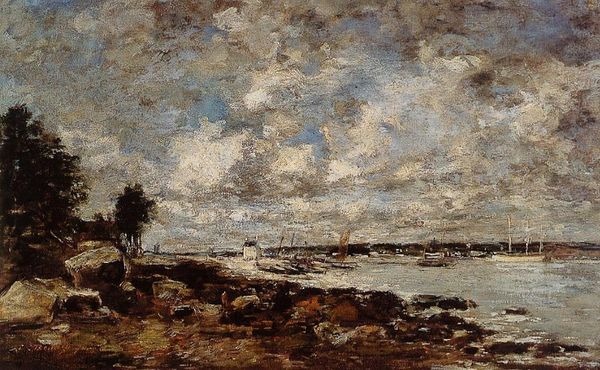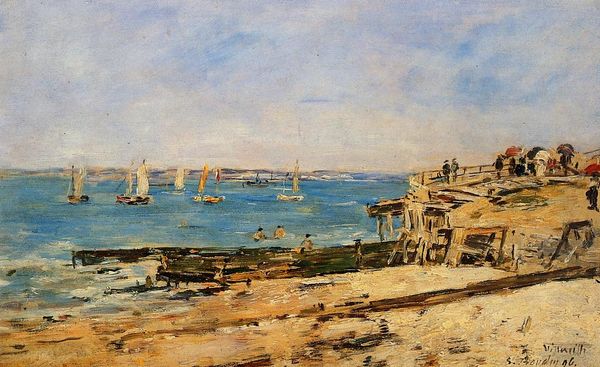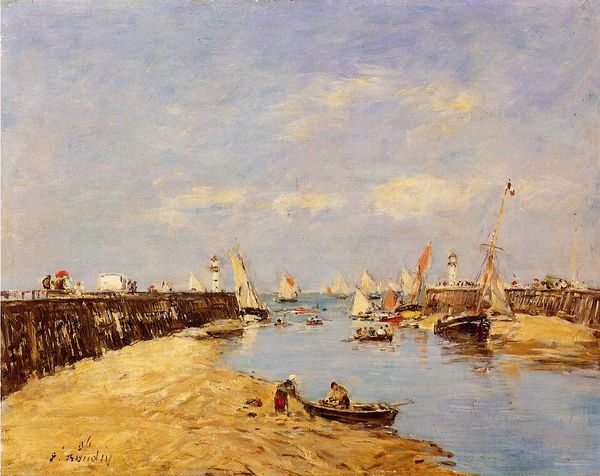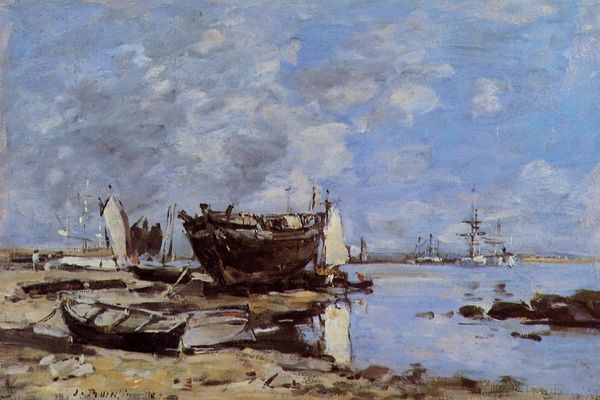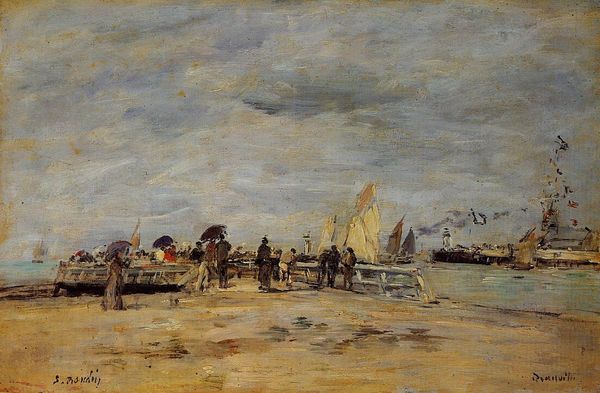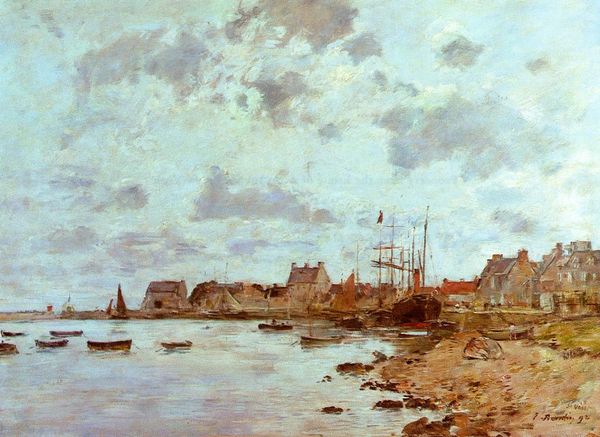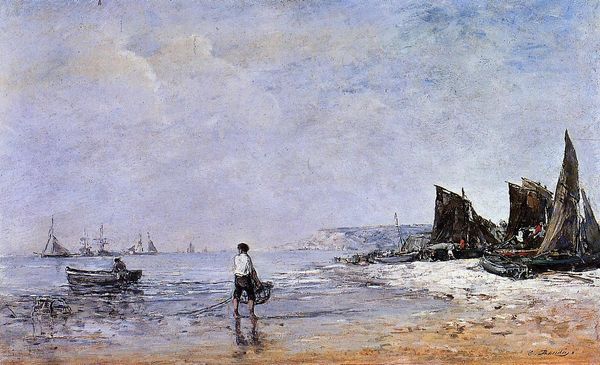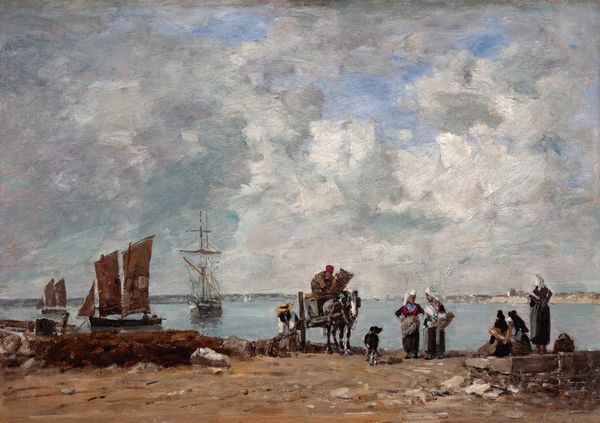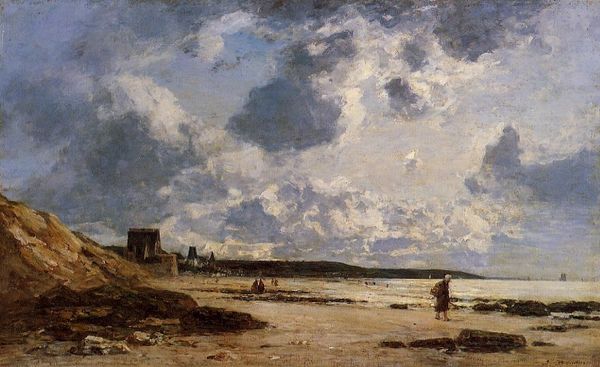
painting, plein-air, oil-paint
#
painting
#
impressionism
#
plein-air
#
oil-paint
#
landscape
#
oil painting
#
genre-painting
#
watercolor
#
realism
Copyright: Public domain
Curator: Here we have Eugène Boudin’s “Plougastel, Women Waiting for the Ferry,” painted in 1870. Editor: It’s overwhelmingly gray. The figures seem small, almost swallowed by the sky and the sea. There is something about that hazy brushwork; it is rough, hinting at a damp chill. Curator: Absolutely. Boudin was, after all, one of the first French artists to regularly paint en plein air. The focus on capturing transient atmospheric effects connects directly to the rise of Impressionism. He’s prioritizing direct observation over academic polish. Editor: But the way he builds up the forms –look at the density in the women's black dresses, it anchors the entire composition. It's more than just capturing light, he is clearly considering the physical reality of these women, their daily routines, and their relationship to this coastal community. I want to know about the cloth of their dresses and bonnets, and where their material came from, how much time it took to make. Curator: And it is in these very details, in the portrayal of their traditional Breton dress, for example, that Boudin acknowledges their place within the social structure of 19th-century Brittany. Tourism was developing, creating a new gaze on the region. Consider how these genre scenes appealed to a burgeoning middle class who sought authenticity and a romanticised vision of rural life. Editor: But did they buy these things in Paris or commission local trades people? How did access to specific supplies structure Boudin's project of depicting rural labor in a modern art world? Curator: Certainly, the work invites that line of inquiry. Boudin was aware of his market, showing regularly at the Paris Salon. "Plougastel" provides us insight into the complexities of representing working-class subjects for bourgeois audiences. Editor: It makes me consider the labor, the making of a painting like this. What sort of portable setup would Boudin be required to produce a piece on this scale? Curator: Examining art from these different angles gives a much fuller picture. Editor: Absolutely. Focusing solely on aesthetics obscures those complex material networks.
Comments
No comments
Be the first to comment and join the conversation on the ultimate creative platform.
